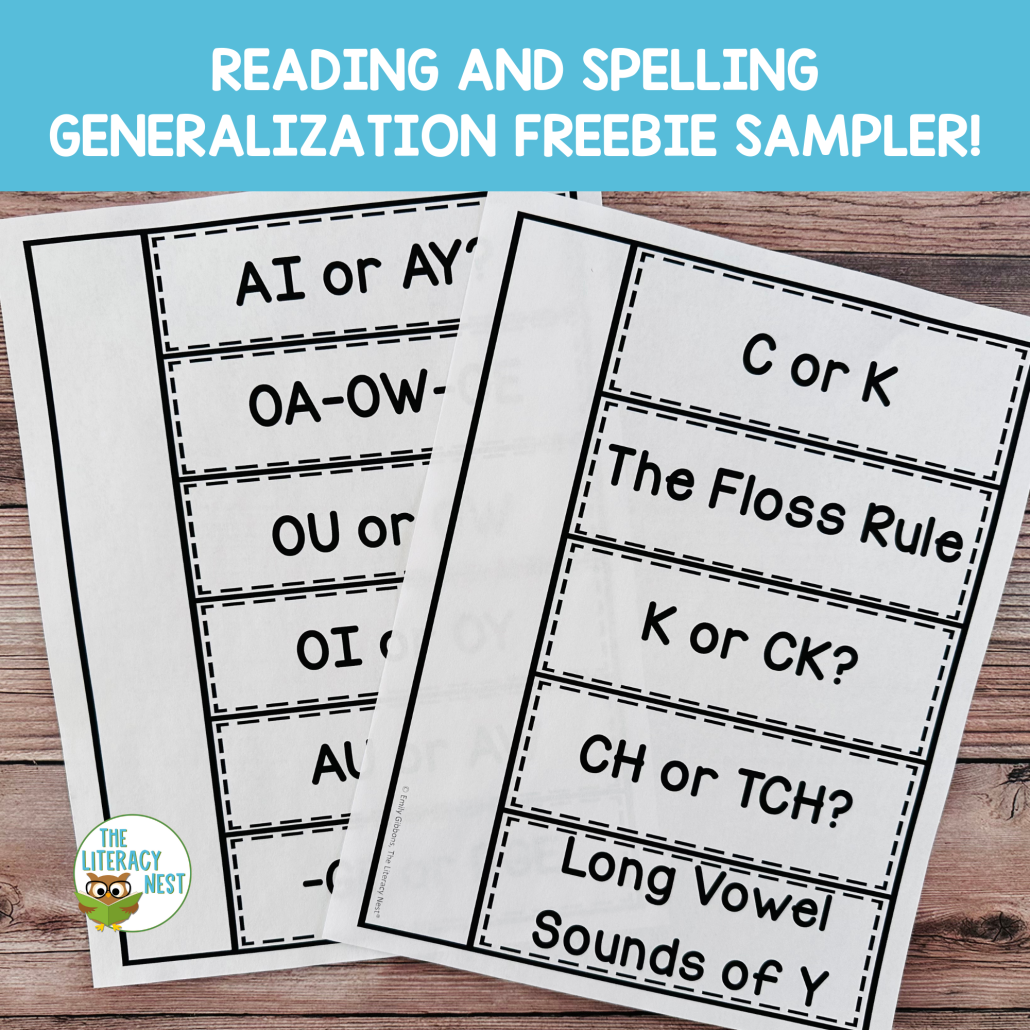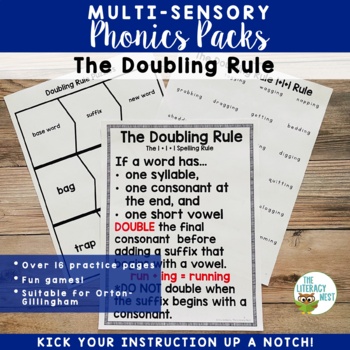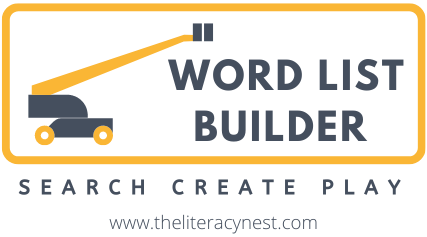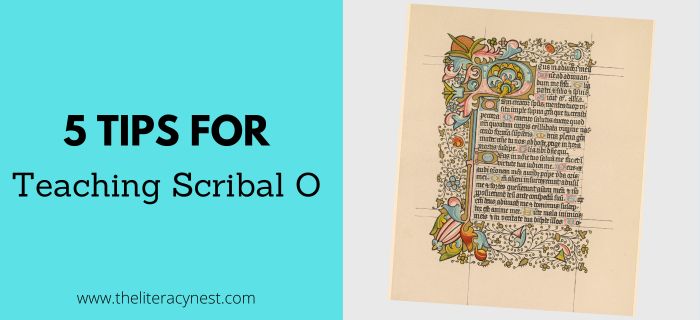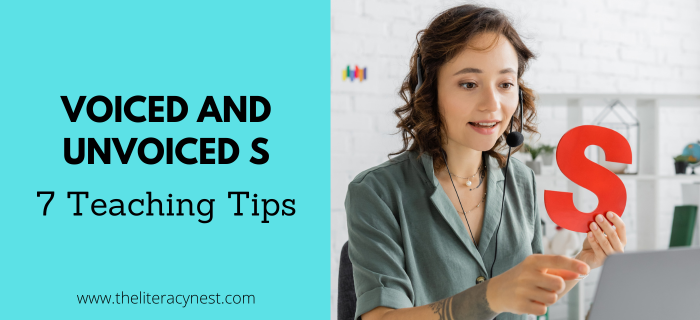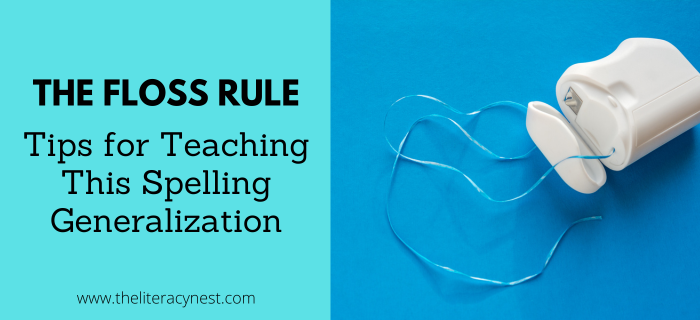Tips for Teaching the Doubling Rule
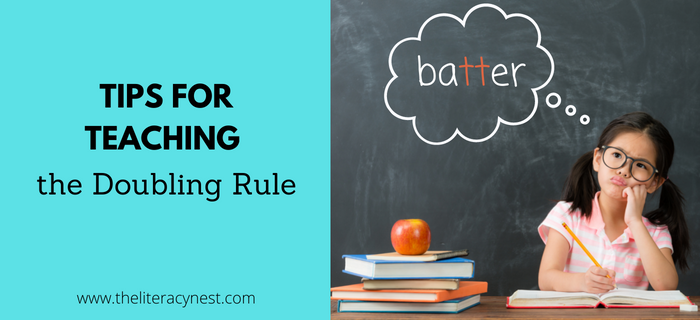
One category of spelling rules that is particularly important is suffixing. These rules are particularly important because suffixes are so frequently used in our written language. Writing even a simple paragraph without suffixes is an incredibly difficult task and results in the use of awkward language that doesn’t sound particularly natural. Learning a few basic suffixing rules, like the doubling rule, will open many doors for your students as well as expand the number of words they can write dramatically.
The three main suffixing rules are:
- The doubling rule
- The drop e rule
- The y rule
Learn more about spelling rules. Read, Taking a Closer Look at Spelling Errors: How a Spelling Assessment Can Inform Your Instruction.
In today’s post, we will be looking at the doubling rule. Stay tuned for more posts in this suffixing series.
The doubling rule is the rule that tells us to double the final letter in words like batting, slipped, and flatter.
When to Use the Doubling Rule
In a 1 syllable word, with 1 vowel and 1 consonant after the vowel, you must double the final letter if you are adding a vowel suffix.
The reason for this has to do with syllable division. If you are presented with an unknown word such as pater, according to the rules of syllable division, we are most likely going to divide this word as pā/ter. When we add a suffix to the word bat without making any changes, we wind up with bater (bā/ter). To keep that vowel sound short, we need to double the t making the suffixed word batter. Now, when we apply the rules of syllable division, the result is băt/ter.
There are some important prerequisites for learning the doubling rule.
- Students need familiarity with identifying the base word, prefixes, and suffixes.
- Students also need a solid understanding of at least closed and open syllables.
- Additionally, students need to know an assortment of common suffixes including both vowel and consonant suffixes.
- Finally, it is helpful if students are familiar with VC/CV and V/CV syllable division patterns.
How to Teach the Doubling Rule
1. Sort Suffixes
When I am teaching this spelling rule, I often start out by having students sort the suffixes from their card deck into vowel and consonant suffixes. It is an important prerequisite skill and using this sort as a warmup activity ensures we are building the rule on a solid foundation. This spelling rule has many layers of learning. How to identify a vowel suffix is one of the first layers.
2. Introduce the Rule
The next layer of learning is to understand each part of the rule. One of my favorite ways to do this is also through a sorting activity.
I tell my students we are going to be learning a new spelling rule. I have words for each of the 1.1.1 criteria in the sort. Then, I ask my students to find all the words with more than one syllable and set them aside. I tell them that this new spelling rule is only for words that have one syllable. Then I ask them to find all the words with more than one vowel and set them aside. I tell them that this spelling rule is also only for words with 1 vowel. Then I ask them to find the words with more than one consonant after the vowel and set those aside. I explain that this spelling rule is also only for words that have 1 consonant after the vowel.
3. Apply the Rule
Now that we have guided students to discover what each of those criteria looks like, the next layer of learning is application. We often refer to the doubling rule as the 1.1.1 rule because it helps students remember the steps for deciding whether to double the final letter. All the criteria must be fulfilled to double the letter.
It is helpful to display the steps on a chart.
Early in learning this rule, it is helpful to use word cards or letter magnets to display words and magnetic cards with common suffixes.
To apply this rule, your students will need to ask 4 questions for each word.
- Is the word one syllable?
- Is there one vowel?
- Is there one consonant after the vowel?
- Are you adding a vowel suffix?
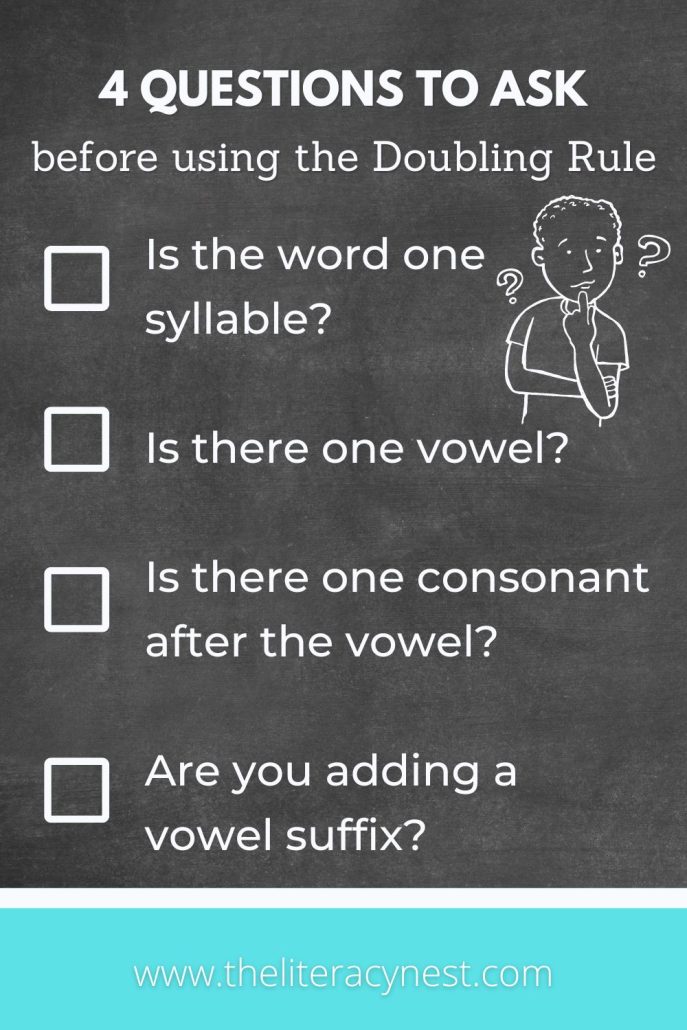
Download a printable version of this Doubling Rule Checklist!
4. Explain Why
The final layer of learning is to understand the why of this rule.
Demonstrate what happens when you double that consonant. The consonant stays with the vowel making a closed syllable and keeping the vowel sounds short. Also, demonstrate what happens if you forget to double and the vowel becomes long.
In the event, a student forgets one or more of the steps, a solid understanding of the rationale for the rule can help them reach the correct spelling.
Download our Reading and Spelling Generalizations freebie sampler! It includes mini posters, a note-taker, and a handy cheat sheet with links to blog posts and a video with teaching tips!
Providing Practice
Chances are that this will be one of the most complex rules your students have learned so far. Provide lots of practice with applying the doubling rule.
- A word list with a checklist for the 4 steps helps students to remember them and think about each word in an organized way. Be sure to use examples that double as well as examples that don’t double.
- Have students voice their understanding of words that double and words that don’t. When students can verbalize their rationale for not applying a spelling rule, they gain a more complete understanding of that rule.
- Make sure that the examples you provide for not doubling use a variety of reasons. Include some two-syllable words, words with more than one vowel, more than one consonant at the end, and words with consonant suffixes.
- I like to incorporate a few items of practice into the lesson daily for a while and then as a periodic review. Sorting words into “double” or “not double” is a good way to increase automaticity. Practicing the rule in isolation is going to be easier than applying the rule in written words or sentences.
This is also a good opportunity to teach past, present, and future progressive tense. For example, I have been reading. I am reading. I will be reading. Have students write sentences that use words that double. You can not only practice the spelling rule but build students’ oral language skills.
Make it Fun!
Did I mention that this rule takes A LOT of practice? Don’t forget the power of playing games. When students play games that require them to check and apply the doubling rule, it gives them more opportunities to solidify their understanding and build mastery. Plus, they have fun doing it. The positive associations of playing games can actually aid memory and retrieval of associated concepts.
Are you looking for resources to teach the Doubling Rule?
Check out this Phonics Pack: The Doubling Rule Orton Gillingham Spelling. This Doubling Rule pack has everything you need to teach the doubling rule with suffixes. It is suitable for reading intervention and Orton-Gillingham instruction.
Are you looking for a list of words that use the doubling rule? Word List Builder has got you covered!
Save time searching for words that follow the double rule! Build your folder of words and create templates in Word List Builder.


